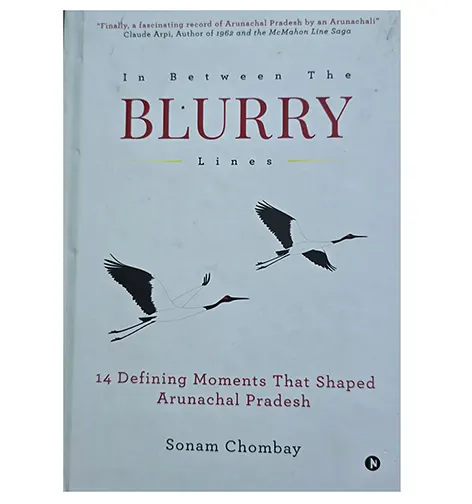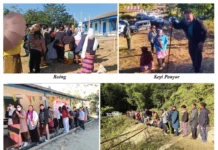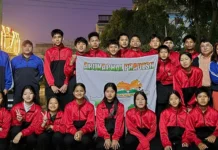Book review
[ Nalong Mize ]
Having just finished reading In Between the Blurry Lines by Sonam Chombay, a native of Tawang district and alumnus of Hindu College, University of Delhi, who is currently serving as commissioner to the chief minister, one must say that it has been an enlightening journey through 14 episodes that shaped the destiny of Arunachal Pradesh.
From the enactment of the Bengal Eastern Frontier Regulation in 1873 to contemporary times, the narrative presents a captivating journey through the historical landscape of our state — tracing significant events such as the Anglo-Abor Wars of 1858, 1859, 1894, and 1911; the Simla Agreement of 1914 and the creation of the McMahon Line; the devastating earthquake of 1950; the Sino-India War of 1962; the attainment of union territory status in 1972; the achievement of statehood in 1987; and developments leading into the present day, along with a healthy glimpse into the future aspirations and challenges of our state.
The book has not only deepened the understanding of the key events and complex dynamics that contributed to the making of present-day Arunachal Pradesh but also enhanced the appreciation of the many pioneers — government officers, political leaders, scholars, and advisors – who played pivotal roles in shaping its path.
Structured in four parts, the book unfolds 14 historical episodes, followed by an epilogue that reflects on the challenges and issues our state faces today. The additional reading section offers even further insights. What makes this work especially remarkable is the seamless blend of the charm of a romantic novel with the intellectual rigour of an academic dissertation, making it both profound and deeply engaging.
In the epilogue, the author passionately brings to the fore several pressing issues, such as balancing modernity with tradition, development with conservation, and demography with progress. The narrative also highlights the dilemmas and dichotomies between local and national interests, the tension between environmental imperatives and the exploitation of natural resources, the pitfalls of influence of money in electoral politics, and the growing concern over the erosion of societal values and morality. These complex challenges demand collective introspection and a concerted effort to shift the existing paradigm.
One particularly striking element is the inclusion of interviews with both the first chief minister, Prem Khandu Thungon, and the current Chief Minister Pema Khandu. This dual perspective is rare and powerful. It provides a glimpse into the challenges of governing a nascent union territory through the eyes of its first leader, while also offering a vision for a Viksit Arunachal from the current leadership. It’s a testament to how far we have come as a state.
This book is a must-read for political leaders, administrators, community-based organisation (CBO) leaders, and especially the youths. It is a treasure trove of information about the events, personalities, and both national and international dynamics that shaped Arunachal. The way the author connects historical milestones to the contemporary challenges and opportunities we face is especially insightful.
For the first time, the emergence of Arunachal has been presented so congruently and succinctly in the form of a beautiful book. It is sure to become an asset for the state in the years to come.
That said, the book is not without minor flaws. I feel there should have been more focus on the development and assessment of administrative mechanisms from the NEFT to NEFA to Arunachal, especially the role of non-governmental actors and communities. But that might also be due to the publication focusing on a long period of history, and not just governance and participatory mechanisms. The raw honesty, however, makes up for these minor flaws and omissions. Some narratives could have benefited from tighter cohesion, yet the overall tapestry leaves a lasting impression.
Kudos to Sonam Chombay for the significant contribution to saga of Arunachal — a beautifully crafted work that, much like Philosophy for NEFA in the formative years of state, can serve as a guiding light for the future developments. (Nalong Mize is general secretary, BJP, Arunachal Pradesh)




